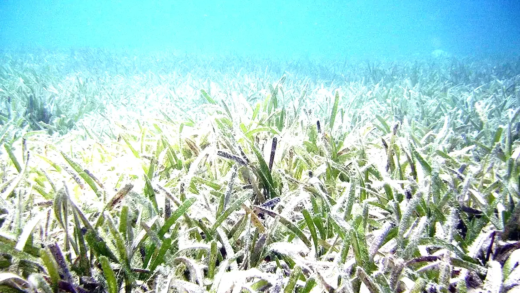Astrobiology explores the potential for alien life and its implications for humanity. Techniques like spectroscopy and robotic spacecraft are crucial in detecting biosignatures on distant planets. Space missions enhance our understanding of life in the universe, while extremophiles broaden the definition of life. The discovery of extraterrestrial life would have profound impacts on society, challenging our beliefs and inspiring collaboration.
The Basics of Astrobiology: Understanding Life Beyond Earth
Astrobiology is the study of life in the universe, focusing on the origins, evolution, and future of life beyond Earth. This branch of science combines biology, astronomy, and geology to understand how life might arise and survive in environments vastly different from our own. Astrobiologists seek to answer fundamental questions about the potential for alien life forms, the conditions necessary for life, and how life on Earth can inform our understanding of life elsewhere.
The significance of astrobiology lies in its potential to reshape our understanding of life. It challenges the notion that Earth is unique in its ability to harbor life. With the discovery of extremophiles—organisms that thrive in extreme conditions on Earth—scientists have begun to explore the possibility that life could exist in similarly harsh environments on other planets or moons.
Astrobiology is crucial for guiding future space missions and exploration efforts. By understanding the characteristics of life and the environments in which it can exist, scientists can develop better tools and strategies to search for extraterrestrial life. This field not only enhances our knowledge of the cosmos but also raises profound philosophical questions about humanity’s place in the universe.
How Scientists Search for Alien Life: Methods and Technologies
Scientists utilize a variety of methods and technologies in their quest to find alien life. These techniques are essential for detecting potential biosignatures—indicators of life—on distant planets and moons. One of the primary methods is spectroscopy, which involves analyzing the light from a planet’s atmosphere to identify chemical compounds that may indicate the presence of life.
Another technique is the use of robotic spacecraft, such as rovers and landers, which can directly sample the soil and atmosphere of other celestial bodies. For example, the Mars rovers have been equipped with advanced instruments to analyze Martian soil for organic molecules and other signs of past or present life.
Additionally, astrobiologists study exoplanets—planets outside our solar system—using telescopes that can detect Earth-like conditions. The search for exoplanets in the habitable zone, where conditions might be right for life, is a major focus of current research.
Moreover, researchers are developing biosensors and other technologies that could be deployed in future missions to detect life more effectively. These innovations will enhance our understanding of the potential for life beyond Earth and guide our exploration strategies.
Characteristics of Alien Life Forms: What Might They Look Like?
Considering the vast diversity of life on Earth, alien life forms could exhibit a wide range of characteristics. While we often envision extraterrestrial beings as humanoid, astrobiologists argue that life could take many forms based on different environmental conditions. For instance, life on a planet with high gravity might be smaller and sturdier, while life on a gas giant could be more buoyant and float in its atmosphere.
Potential traits of alien life forms include:
- Biochemistry: Alien organisms might use different biochemical pathways, possibly based on silicon instead of carbon.
- Adaptability: Similar to extremophiles, extraterrestrial life could adapt to extreme temperatures, pressures, and radiation levels.
- Reproduction: Reproductive methods could vary widely, from binary fission to more complex systems depending on environmental conditions.
Understanding these potential characteristics helps scientists form hypotheses about where to look for life and what signs to detect. This exploration opens up exciting possibilities about the nature of life in the universe and encourages ongoing research in astrobiology.
Alien Organisms vs. Earth Life: A Comparative Analysis
Alien organisms present a fascinating contrast to Earth life. Understanding these differences is crucial for astrobiology. Earth life is primarily carbon-based and relies on water, but alien life could use alternative biochemistries. For instance, some scientists speculate that silicon might be a foundational element for extraterrestrial organisms.
Key differences may include:
- Metabolism: While Earth organisms metabolize nutrients to produce energy, alien life might have unique metabolic pathways suited to their environments.
- Structural Composition: Alien life forms could possess entirely different cellular structures, possibly without DNA or RNA as we know them.
- Reproductive Strategies: Extraterrestrial organisms may reproduce in ways that differ greatly from Earth’s sexual or asexual reproduction methods.
These differences challenge our current understanding of biology. They highlight the necessity of broadening our search parameters when investigating potential alien life. By analyzing what we know about life on Earth, we can better predict the myriad forms life might take in the universe.
Extremophiles: Life in Extreme Conditions and Their Significance
Extremophiles are organisms that thrive in environments previously thought to be uninhabitable. Their existence has profound implications for the search for alien life. By studying extremophiles, scientists gain insights into the potential for life in extreme extraterrestrial conditions.
Examples of extremophiles include:
- Thermophiles: These organisms flourish in high temperatures, such as those found in hydrothermal vents.
- Halophiles: Salt-loving microbes that thrive in highly saline environments, like salt lakes.
- Acidophiles: Organisms that can survive in acidic conditions, demonstrating resilience in harsh environments.
Research on extremophiles indicates that life can adapt to a wide range of conditions. This adaptability suggests that life might exist in similar extreme environments on other planets, such as the subsurface oceans of Europa or the acidic clouds of Venus. Understanding extremophiles expands our definition of life and guides our exploration of the cosmos.
Environmental Conditions on Other Planets: The Building Blocks for Life
Environmental conditions are critical in determining the potential for life on other planets. Factors such as temperature, atmosphere, and water availability play a significant role in the habitability of celestial bodies. For instance, Mars has been a focal point in astrobiology due to evidence of past water flows.
Key environmental aspects to consider include:
- Temperature: Life as we know it requires certain temperature ranges to thrive. Planets in the habitable zone around stars are prime candidates.
- Atmosphere: A protective atmosphere can shield life from harmful radiation and regulate temperature.
- Water Availability: Liquid water is essential for all known life, making its presence a primary indicator in the search for extraterrestrial organisms.
Understanding these conditions helps scientists identify which planets or moons are most likely to host life. By analyzing the environmental characteristics of these celestial bodies, we can prioritize our exploration efforts and refine our search for alien life.
Detecting Life on Distant Planets: Techniques and Tools
Astrobiology plays a crucial role in detecting signs of life on distant planets. The search for extraterrestrial life involves advanced techniques and tools designed to identify biosignatures—indicators of life. One prominent method is spectroscopy, where scientists analyze light from a planet’s atmosphere. This helps identify chemical compounds, like oxygen or methane, that could signal biological processes.
Another essential tool is the use of robotic spacecraft. These instruments can land on other planets or moons and directly sample their soil and atmosphere. For instance, the Mars rovers are equipped with sophisticated instruments to search for organic molecules, providing valuable data on the planet’s potential to support life.
Additionally, telescopes are employed to study exoplanets—planets outside our solar system. Researchers focus on exoplanets located in the habitable zone, where conditions might be suitable for life. Advanced technologies, such as biosensors, are also being developed for future missions. These innovations enhance our ability to detect life signs, making the search for alien life more efficient and promising.
The Role of Space Missions in Discovering Alien Life
Space missions are fundamental in the quest to discover alien life. They provide direct exploration of celestial bodies, offering insights that cannot be gained from Earth. Notable missions, like the Kepler Space Telescope, have identified thousands of exoplanets, significantly expanding our knowledge of potentially habitable worlds.
Moreover, missions like Curiosity and Perseverance on Mars aim to uncover signs of past life. These rovers analyze Martian soil and rocks, searching for organic compounds that may indicate historical biological activity. The success of these missions shapes future exploration strategies and informs the development of new technologies.
Furthermore, upcoming missions to moons like Europa and Enceladus, which are believed to harbor subsurface oceans, are poised to revolutionize our understanding of life beyond Earth. By studying these environments, scientists hope to answer profound questions about the existence of extraterrestrial life.
Evolving Understanding of Life Through Extremophiles: A New Perspective
Extremophiles—organisms that thrive in extreme conditions—have reshaped our understanding of life. Their discovery challenges traditional notions about the limits of life and suggests that life could exist in harsh extraterrestrial environments. For example, organisms living in hydrothermal vents, acidic lakes, or even radioactive environments demonstrate remarkable adaptability.
Research on extremophiles has implications for astrobiology. It highlights the need to broaden our search for life, considering that alien organisms might thrive in environments previously deemed uninhabitable. This expanded definition of life encourages scientists to explore diverse planetary conditions, such as the subsurface oceans of icy moons or the acidic atmospheres of Venus.
Ultimately, extremophiles serve as a model for understanding potential alien life. Their resilience provides hope that life could exist in extreme environments across the universe, prompting continued exploration and research in astrobiology.
Implications of Discovering Alien Life for Humanity: What Would It Mean?
The discovery of alien life would have profound implications for humanity. It would challenge our understanding of life and our place in the universe. Philosophically, finding extraterrestrial organisms could reshape religious and cultural beliefs, prompting a reevaluation of what it means to be human.
Additionally, the scientific community would face new questions about the potential for communication with alien civilizations. The implications for technology, biology, and ethics would be vast. For instance, understanding alien life forms could lead to advancements in medicine and environmental science.
Moreover, discovering alien life could unite humanity in a shared quest for knowledge, fostering collaboration across nations and cultures. It would spark interest in space exploration and scientific research, inspiring future generations to pursue careers in science and technology.





Comments are closed.